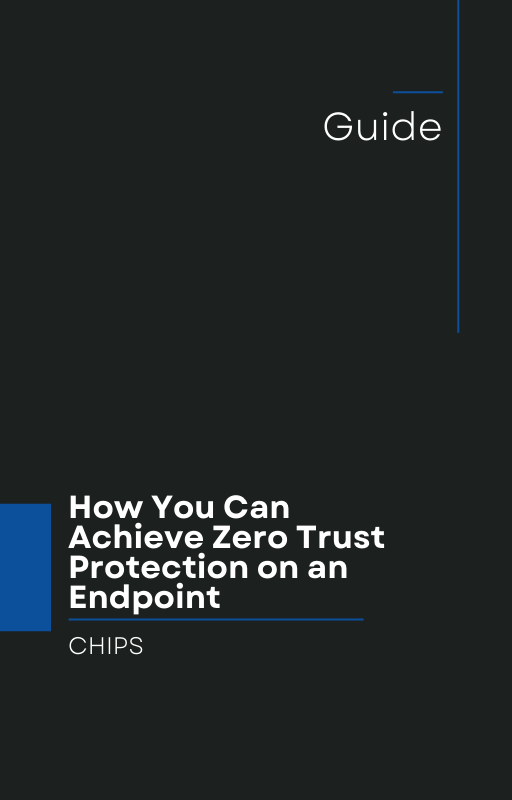In a recent report from HelpNetSecurity, a worrying trend has emerged in the ransomware landscape. Attackers are now leveraging on-premises system breaches to infiltrate cloud environments, specifically targeting Microsoft 365 accounts.
This escalation marks a new chapter in ransomware attacks, where compromising on-premises infrastructure is just the beginning, and the real damage is done when attackers move laterally to compromise cloud environments. For businesses relying on cloud solutions like Microsoft 365, this trend could spell disaster if their security approach remains rooted in traditional "Detect and Respond" methods.
The Attack Chain: On-Premises to Cloud
As outlined in the HelpNetSecurity article, the attack begins with an on-premises compromise, which is often achieved through credential theft, phishing, or exploiting vulnerabilities in outdated software. Once inside, attackers pivot to the cloud environment, using the foothold they’ve established on-premises to access Microsoft 365 accounts. This lateral movement is particularly alarming because many organizations mistakenly assume their cloud data is safe as long as their on-premises systems are protected. In reality, attackers exploit this false sense of security.
Microsoft 365 is a frequent target due to its widespread use and the sensitive data it holds. Once attackers gain access, they exfiltrate data, deploy ransomware, or use the compromised accounts for further phishing campaigns. This ability to move fluidly between on-premises and cloud environments makes ransomware more dangerous than ever, underscoring the need for a new security approach.
Why "Detect and Respond" Isn’t Enough
Most businesses still rely on "Detect and Respond" cybersecurity strategies, which focus on identifying threats after they’ve breached the system and then working to neutralize them. This reactive approach is problematic in today’s threat landscape. In the case of ransomware, detection often comes too late—after the damage has already been done. With cloud environments now in the crosshairs, the consequences of relying on "Detect and Respond" are magnified. Attackers move quickly, leaving businesses with little time to respond before critical data is compromised.
The traditional "Detect and Respond" model also struggles to account for the complexity of hybrid environments, where on-premises systems are interconnected with cloud services. When an attacker breaches one, they can use it as a launching pad to breach the other. By the time a threat is detected, it’s often too late to prevent the lateral movement into the cloud.
The Shift to "Isolation and Containment"
To counter these evolving threats, businesses need to adopt an "Isolation and Containment" strategy—one that prevents malware from ever executing, moving, or causing damage, regardless of whether it’s in an on-premises or cloud environment. This is where AppGuard comes in. Unlike "Detect and Respond" solutions that require threats to be identified before action can be taken, AppGuard focuses on blocking malware at the point of entry and isolating potential threats before they can spread.
AppGuard’s proven technology isolates applications from critical system functions, meaning that even if a system is compromised, the malware is unable to move laterally or escalate privileges. This strategy is crucial in stopping attackers from jumping from on-premises systems to cloud accounts like Microsoft 365.
In scenarios like the one outlined in the HelpNetSecurity article, where ransomware spreads from on-premises systems to cloud environments, AppGuard’s "Isolation and Containment" approach prevents this movement. The ransomware would be contained before it ever reached the cloud, preventing the catastrophic data breaches and disruptions that have become so common.
The Proven Solution: AppGuard
AppGuard’s 10-year track record of success demonstrates its effectiveness in preventing breaches like those described in the HelpNetSecurity article. By isolating malware and preventing lateral movement, AppGuard ensures that even if attackers gain a foothold in one part of your system, they are unable to exploit it to spread to cloud services or other critical areas.
In today’s environment, where ransomware is increasingly targeting cloud infrastructures like Microsoft 365, businesses cannot afford to rely on outdated security approaches. AppGuard’s proactive containment approach is the solution that businesses need to stay ahead of these evolving threats.
Call to Action
Ransomware attackers are no longer satisfied with just compromising on-premises systems—they’re targeting your cloud environments too. If your business is still relying on a "Detect and Respond" strategy, you’re leaving yourself vulnerable to these sophisticated threats. It’s time to make the shift to "Isolation and Containment" with AppGuard.
Talk to us at CHIPS today about how AppGuard can prevent these types of ransomware incidents from impacting your business. Don’t wait until it’s too late—protect your systems and cloud environments now with AppGuard's proven solution.
Like this article? Please share it with others!

October 20, 2024

Comments